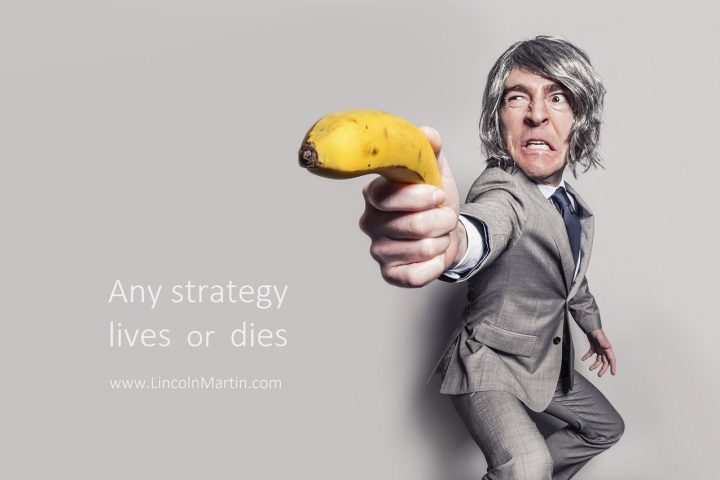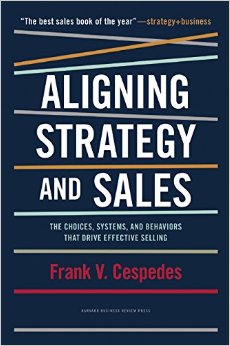
Is Your Strategy Built To Live Or Die?
Any strategy lives or dies on the basis of its customer value proposition. There are many typologies relevant to crafting a value proposition, because there are many ways to win customers. But the key issue is always: what is the center-of-gravity in our approach? Do we ultimately compete on the basis of our cost structure (e.g., Ryanair and Wal-Mart) or another basis that increases our target customer’s willingness-to-pay (e.g., Singapore Airlines and Nordstrom)? In other words, will wesell it for more ormake it for less — and allocate sales resources accordingly?
Nearly all competitive markets confront firms with this choice. In retailing, there is Wal-Mart, Dollar General, and category killers. But there is also Nordstrom, Louis Vuitton, and many high-end boutiques. In pharmaceuticals, there are blockbuster drugs targeted at mass-markets segments. But there is also Soliris, a drug sold by Alexion to treat certain blood and kidney diseases that afflict relatively few people. Soliris costs $400,000 per patient annually. But insurers pay this price because Soliris is the only safe and effective treatment for these diseases and that price is less than the total cost of alternative treatments. Alexion has grown from $25 million in sales in 2007 to $1.5 billion in 2014.
Sell it for more. Here, your product or service provides better performance on attributes that are important to target customers and for which they are willing to pay a premium. This approach must continually avoid the following pitfalls:
- Meaningless or false differentiation:the points of superiority are unimportant to customers or based on a false presumption of superiority.
- Uneconomic or invisible differentiation:customers are unwilling to pay for additional performance or are unaware of the difference.
- Unsustainable differentiation:the product or service features are imitated over time.
Make it for less. Here, your cost structure allows you to sell and make money at prices that competitors cannot. Realities in many industries typically allow only a few firms to compete successfully in this manner. Once they do, moreover, their scale advantages make it difficult for others to duplicate. To be a viable value proposition, therefore, this approach must avoid these pitfalls:
- Price wars: any cost advantage is lost in price competition and no one extracts value.
- Substitutes: you may have a cost advantage over competitors, but not over substitutes that are available to target customers.
- Cost reductions versus lowest costs: lowering cost doesn’t necessarily mean your cost is lower than competitors and, in any market, there is only one lowest cost competitor. Never confuse these different cost positions.
You must be clear with your people about where your business falls along this spectrum.
If you’re not clear about this, your sales efforts will run into problems. Externally, there will always be someone out there who can beat you on cost and price, or someone else who tailors its operations and sales efforts to the performance and buying criteria of a segment better than you can. Depending upon your value proposition, sales will face different buyers and selling tasks and require different support processes to deliver value.
Internally, important organizational issues flow from the value proposition. Different assets will be needed for the cross-functional activities required for effective selling of a given value proposition. Different metrics are relevant for setting and evaluating sales performance. And basic HR issues are at stake whenever a firm is unclear about its value proposition: salespeople cannot be premium service sellers in the morning and cost hawks in the afternoon. It doesn’t work that way.
Strategy requires choice, clear communication, and coherent performance management practices, not just stirring metaphors, with the people who deal with customers. A moment of truth is the customer value proposition. Clarity about that will help your salespeople (and everyone else) focus more efficiently, qualify customers more effectively, and allow your firm to allocate resources more profitably.
About Prof. Frank Cespedes
Frank Cespedes is the MBA Class of 1973 Senior Lecturer of Business Administration at Harvard Business School. He has run a business, served on boards for start-ups and corporations, and consulted to many companies around the world. He is the author of six books, most recently “Aligning Strategy and Sales: The Choices, Systems, and Behaviors that Drive Effective Selling,” and many articles in Harvard Business Review, The Wall Street Journal, California Management Review, and other publications.
Follow Frank on Twitter @fvcespedes.
Credit to Harvard Business Review for originally publishing this article on their magazine. With the permission of Prof. Frank Cespedes.
Lincoln Martin Like: Aligning Strategy and Sales Book
Frank’s latest book is the most comprehensive strategy book for the “generation now” sales and marketing professional. A must buy for everyone who want to learn go-to-market, clear road mapping and aligning strategic goals. With thought provoking sales insights and engaging real business examples, this book is an exceptional investment for startups and multinationals. Click the book to purchase online.

